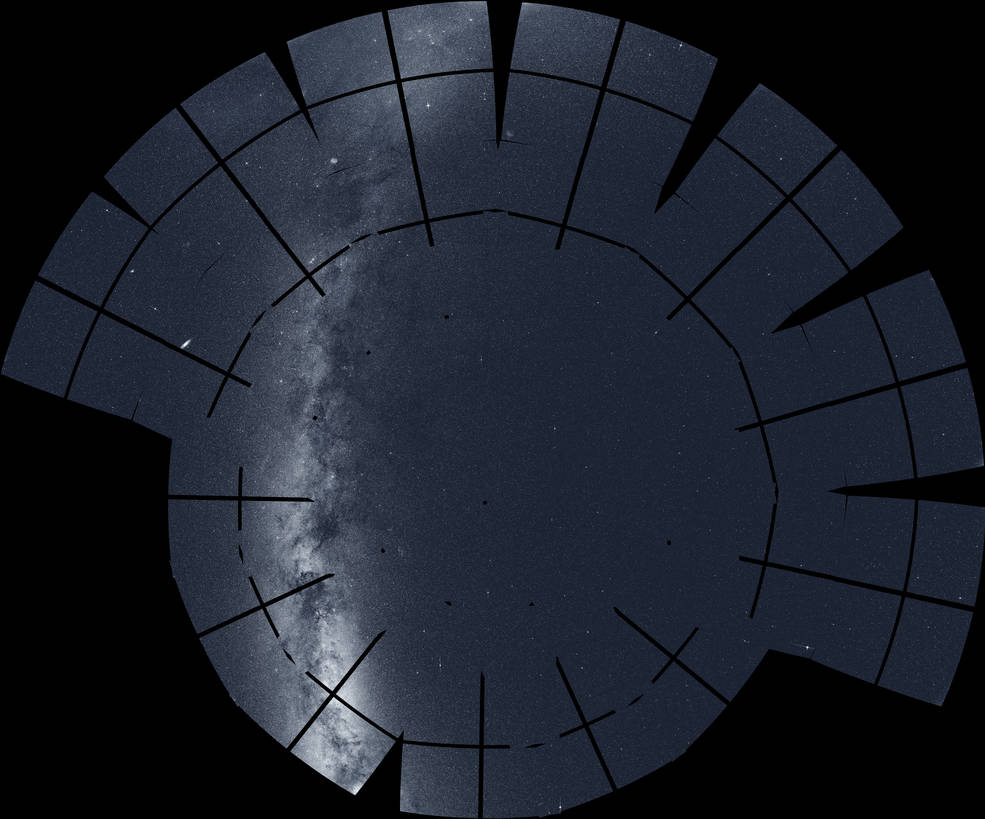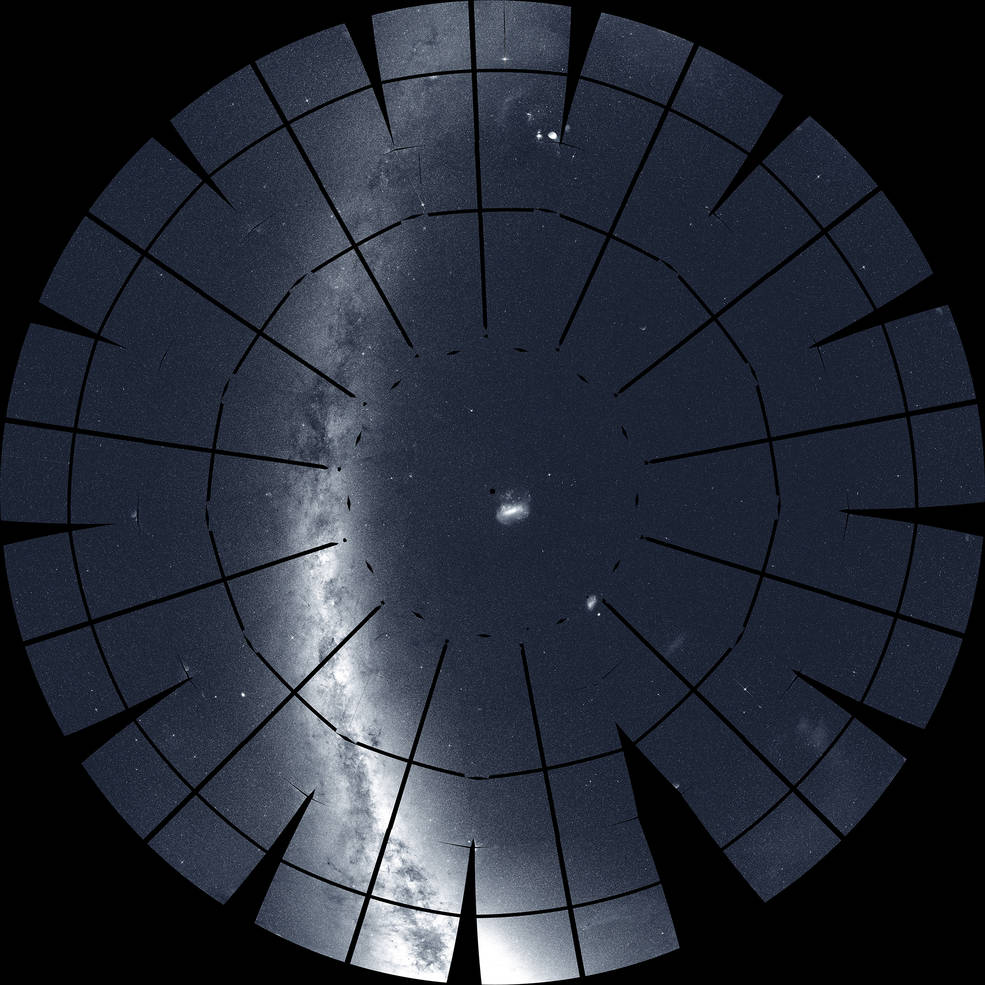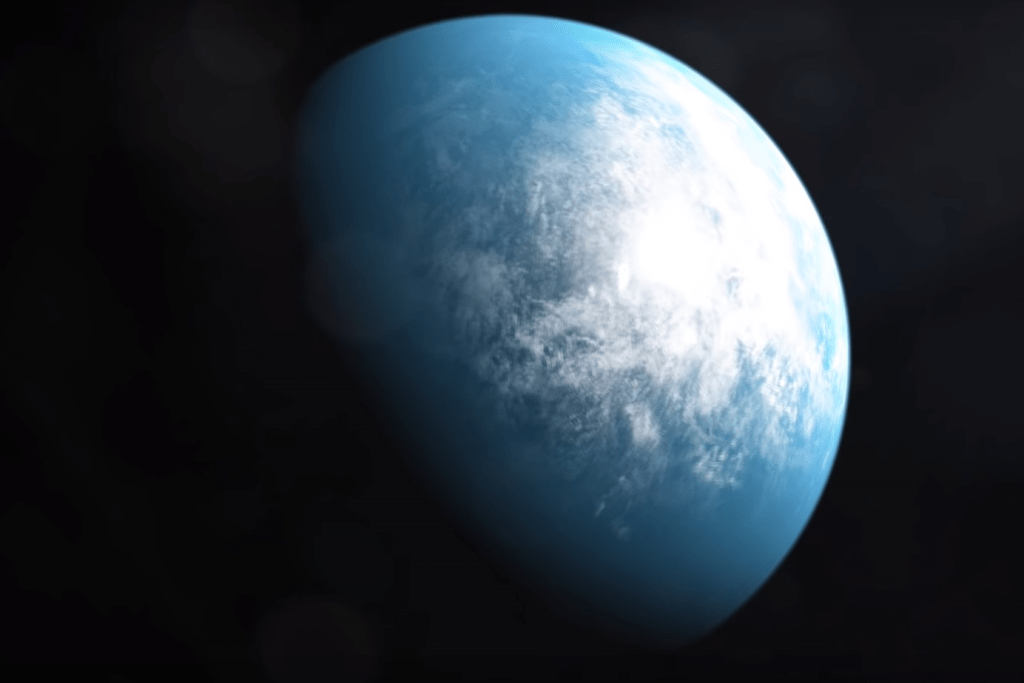NASA’s TESS planet-finding spacecraft completed its primary mission about 3 months ago. TESS’s (Transiting Exoplanet Survey Satellite) job was to search the brightest stars nearest to Earth for transiting exoplanets. It found 74 confirmed exoplanets, with another ~1200 candidates awaiting confirmation.
It surveyed 75% of the sky during its two-year primary mission, and now NASA has released a composite image of the northern sky, made up of more than 200 individual images.
To perform its task, TESS divided the northern sky into 13 separate, manageable sectors. It monitored each sector with its four cameras for close to a month, looking for the tell-tale dimming of stars when a planet transits in front of it.

It took almost one full year of images to build the panorama of the northern sky, the same as it did for the southern panorama that NASA released about a year ago.
The northern panorama has some significant gaps in it, compared to the more complete southern panorama. In a press release, NASA explains that “For about half of the northern sectors, the team decided to angle the cameras further north to minimize the impact of scattered light from Earth and the Moon. This results in a prominent gap in coverage.”

These panorama’s are just a side benefit of TESS. They’re interesting and cool, but they represent just a tiny fraction of the stream of data that the spacecraft has sent back to Earth. TESS has four cameras, but there’s much more to it than that.
Each of the four cameras has four CCD (Charge Coupled Device) sensors, for a total of 16. During the two-year span of its primary mission, TESS imaged one of the 13 sky sectors every 30 minutes. So each of TESS’s CCDs captured over 30,000 full science images. When you combine all of that image data with the other data TESS sends to Earth, the spacecraft has sent back more than 40 terabytes of data, so far. This is “…equivalent to streaming some 12,000 high-definition movies,” according to the press release.
But that barrage of data is just the beginning, according to NASA. TESS has now begun its secondary mission, where it’ll spend another year imaging the southern sky again. It’ll search the parts of the sky it missed last time, as well as take a second look at some planet candidates.
NASA has made some improvements to the way that TESS gathers and manages its data. The spacecraft will now image each sector of the sky in only 10 minutes, rather than the previous 30 minutes. It’ll also be able to measure the brightness of thousands of stars every 20 seconds. So during the secondary mission, TESS will be delivering a lot more data. And in this case more data means a more successful mission.

The circular regions where segment overlap at the ecliptic poles have observing period of just over 100 days, enabling longer period planets to be discovered. These regions are known as the continuous viewing zones (CVZs). Image Credit: TESS/MIT
“These changes promise to make TESS’s extended mission even more fruitful,” said Padi Boyd, the mission’s project scientist at NASA’s Goddard Space Flight Center in Greenbelt, Maryland. “Making high-precision measurements of stellar brightness at these frequencies makes TESS an extraordinary new resource for studying flaring and pulsating stars and other transient phenomena, as well as for exploring the science of transiting exoplanets.”
TESS’s sensitive instruments found more than just exoplanets during its primary mission. The spacecraft also found a black hole in the process of destroying a star, an outburst from Comet 46P/Wirtanen, and also helped astronomers understand a bizarre type of pulsating star.
And TESS also has a Guest Investigator program. It runs in one year cycles, and during each cycle there are about 200,000 targets that GIs can apply to examine. Each selected proposal grants a 2 minute and 20 second “cadence postage stamp” of a single target. During the two years of its primary mission, TESS awarded about 20,000 of these opportunities to guest investigators.

TESS has been a very successful mission by nearly any measure. It picked up where NASA’s Kepler Observatory left off in October 2018, after discovering more than 2,500 exoplanets. But while Kepler was sent into space to find any exoplanets it could, TESS’s mission is more refined, and is built partly on Kepler’s success.
Kepler found a lot of gas giants and hot Jupiters, and planets that are unsuitable for life. But TESS has a more specific goal: to detect Earth-size and Neptune-size planets orbiting stable stars that don’t exhibit much flaring. When the mission was designed and launched, NASA expected TESS to discover more than 20,000 transiting exoplanets, including 500 to 1000 Earth-sized planets and super-Earths. It’s been largely successful so far.
TESS is focusing on stars that are close to Earth that are more suitable candidates for follow-up observations. The James Webb Space Telescope will be able to examine exoplanet atmospheres for biosignatures, and the ESA’s CHEOPS CHaracterising ExOPlanets Satellite) mission is in operation right now. It’s job is to estimate the mass, density, composition, and formation of exoplanets.
Thanks to TESS, follow-up observations will be a lot easier. While Kepler catapulted our understanding of exoplanets into the future with its brute power, finding exoplanets at great distances, TESS is different. By focusing on closer exoplanets, it’s making its own massive contribution to our burgeoning exoplanet knowledge.
More:
- Press Release: NASA’s TESS Creates a Cosmic Vista of the Northern Sky
- MIT: TESS
- Universe Today: TESS Finds its First Earth-Sized World in the Habitable Zone of a Star

